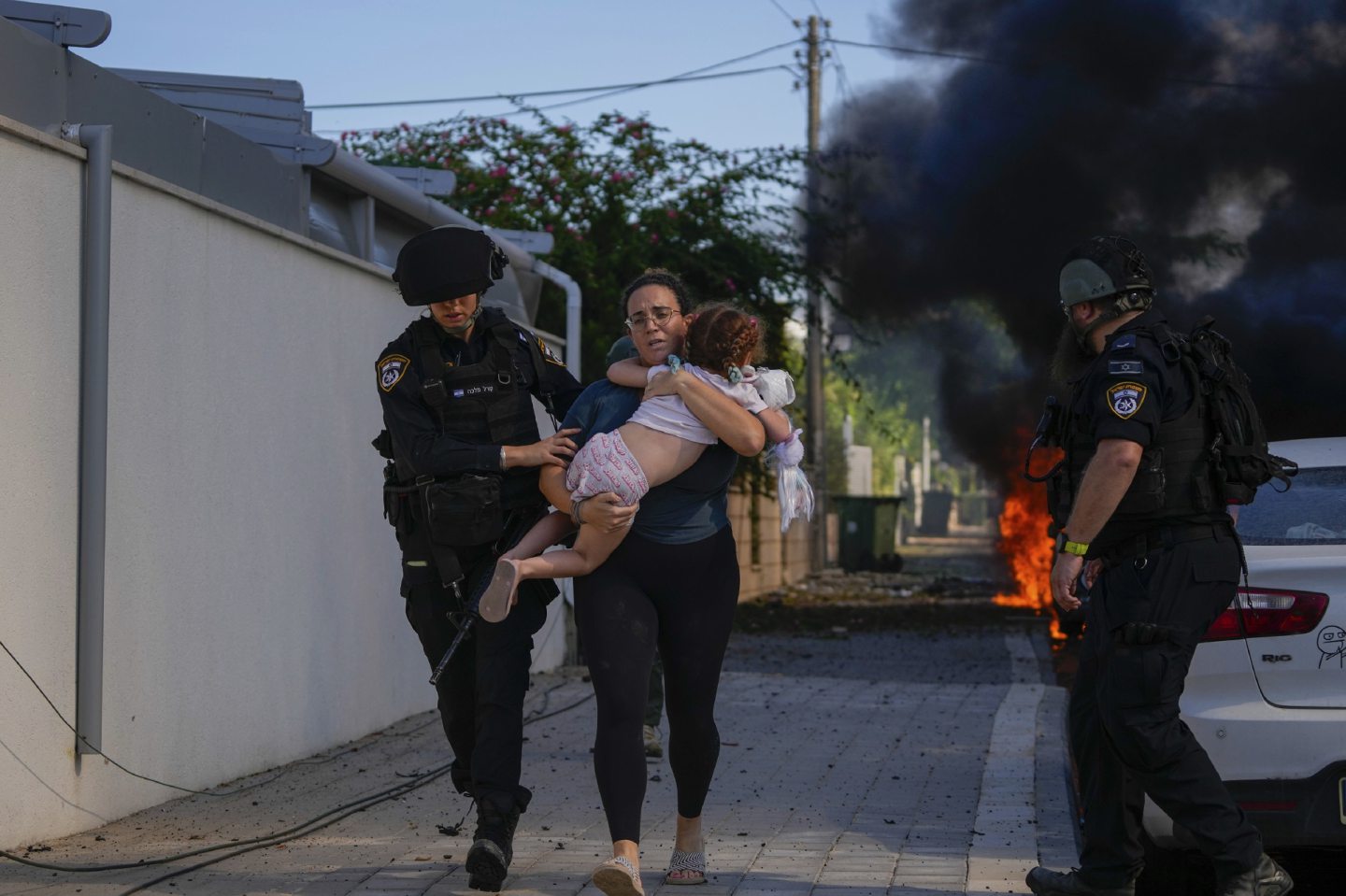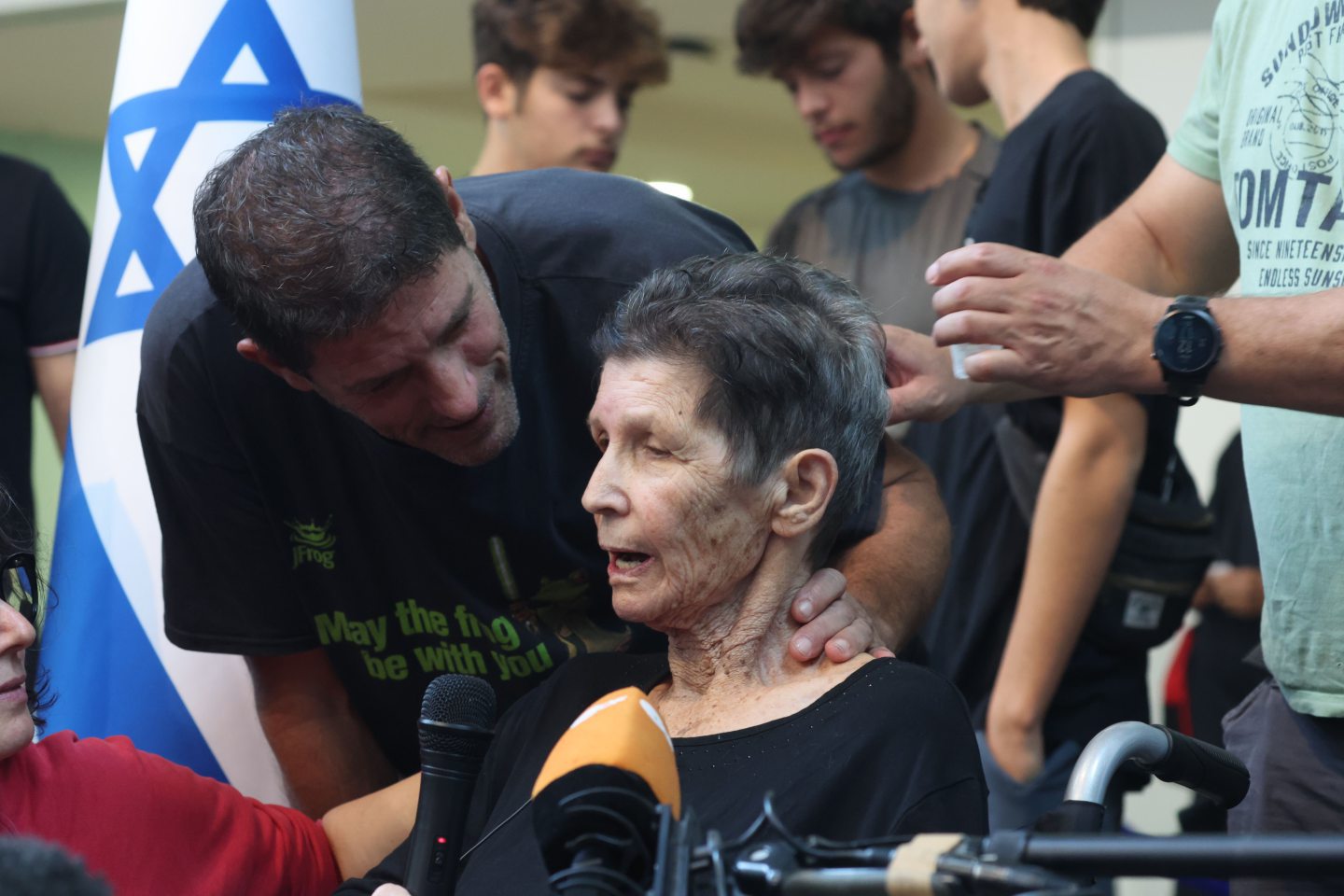Sometimes, images from war zones become such an unbearable sea of pain that individual faces are secondary to the sheer communal disaster of it all.
On Monday, World Children’s Day, there are two faces – one from Gaza and one from Israel – that I will pull from that ocean of anonymous suffering to remember the 468 million children worldwide who were caught in the crossfire of adult conflict last year. One represents hopelessness, the other the potential of the human spirit.
The first face is a child, a little boy with dark hair and big, liquid brown eyes, from which unshed tears are about to spill. He is in a Gaza hospital, where his family have been brought after another Israeli bombardment, and his expression transfixes the viewer because it hosts such a complex cocktail of emotions.
His eyes contain a fear so much bigger than his childish comprehension that it makes you want to reach into the television screen to protect him from that terrified bewilderment. Then, a voice asks: “Who did this?” “Israel!” He replies instantly. His face darkens with a defiance so adult, it is shocking. “I am not afraid,” he says, the tears finally spilling.
World Children’s Day highlights so many injustices to children – the global economic and political systems that allow them to starve, to be without shelter, to remain uneducated. But, this year, the plight of children in war zones demands special attention. Often, their situation is exacerbated by famine, sexual violence, or recruitment by armed forces. Help is often inconsistent and charity based: The Lancet this month drew attention to children being treated in an Israeli trauma centre staffed by volunteers.
There have been so many devastating images from Israel and Gaza to haunt us. The grieving families. The doctor whose own family was brought into his hospital while the cameras rolled, who searched for, and found, his six-year-old son in the morgue. The row of helpless babies left to die after bombing cut off the hospital electricity supply fuelling their incubators.
But that defiant little boy in the Gaza hospital is one of the most depressing, because he has the potential to snuff out future peace. As he displayed so clearly, there is a point at which fear becomes fury. Today’s traumatised child is tomorrow’s rebellious adult.
These children become the incubators of tomorrow’s violence
In Gaza, children’s trauma has had serious mental health consequences, with UN figures suggesting that four out of five children there suffer from depression, one in two have contemplated suicide, and three out of five self-harm. These children become the incubators of tomorrow’s violence – and the fuel to those incubators is pumping freely.
“I fear for the future,” the late, renowned Palestinian psychiatrist Eyad El-Sarraj once said. In the first intifada, he recalled, children threw stones at occupying Israeli soldiers. Ten years later, they were suicide bombers.
In Gaza, children make up roughly 50% of the population. The median age there is just 19
When hope for the future is extinguished, psychiatrists warn, extremism flourishes. The children of both sides are currently suffering mental health consequences. “We’re witnessing a tsunami of anxiety symptoms among children,” says Zachi Grossman, chair of the Israeli Paediatric Association.
In Gaza, children make up roughly 50% of the population. The median age there is just 19. Hamas came to power in the 2006 elections, with 40% of the vote. There has been no election since.
Only a tiny minority of Gaza’s current population, therefore, ever voted for Hamas. Combine electoral voicelessness with the economic powerlessness of an unemployment rate running at 47%, and you create what psychologists fear: hopeless dispossession and anger.
What are adults doing to protect child victims?
Under the 1949 Geneva Convention, the targeting and killing of civilians is against international law. Yet, 70% of those killed so far in Gaza have been women and children.
On World Children’s Day, we have to ask what adults are doing to protect the child victims of adult conflict. Children have been abandoned to a cycle of violent despair in which no rule of law is secure; in which compromise is non-existent; in which politics has failed and diplomacy has failed and, most important of all, humanity has failed.
Here is the hope. The second defining face of recent weeks is that of an elderly Israeli hostage. Usually, children represent the future; the elderly illustrate decline. This woman represents wisdom, not impotence. Freed by Hamas gunmen, she turned back to her captor. For a moment, their hands clasped. “Shalom,” she said. “Peace.”
Clearly, she knew that atrocity can never be vindicated or vanquished by greater atrocity. In that, she was joined by another grieving Israeli, David Zonsheine, who told an interviewer: “I’m full of rage. But rage is one thing and policy and plan are another.” Isn’t that what adults should be teaching their children: how to manage rage with dialogue and collaboration and compromise?
We have, all of us, choices in this. We can choose either to love our children more than we hate our enemies, or hate our enemies more than we love our children.
Catherine Deveney is an award-winning investigative journalist, novelist and television presenter



Conversation